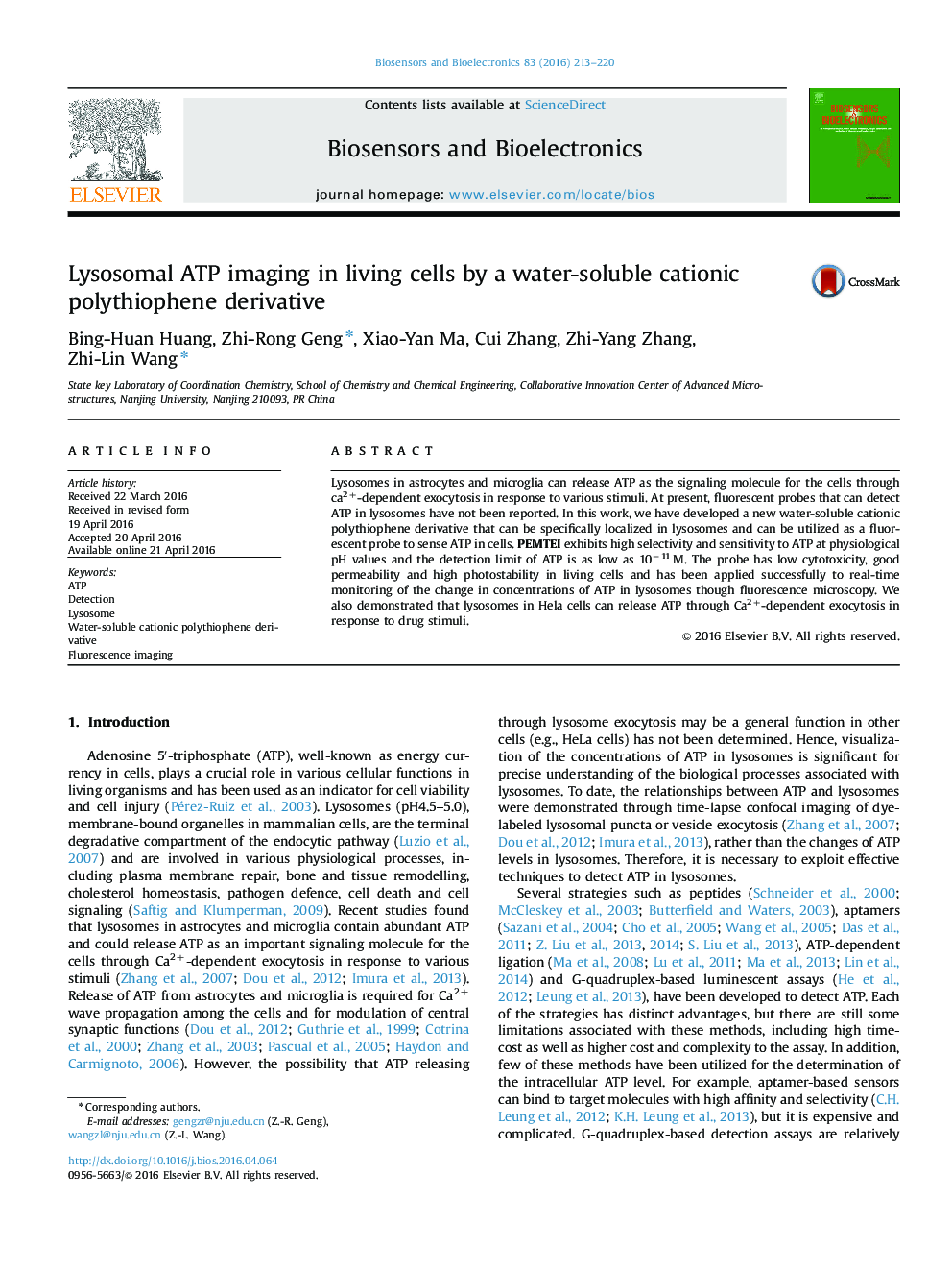| Article ID | Journal | Published Year | Pages | File Type |
|---|---|---|---|---|
| 866223 | Biosensors and Bioelectronics | 2016 | 8 Pages |
•PEMTEI is the first fluorescent probe for the detection of ATP in lysosome.•PEMTEI exhibits high selectivity and sensitivity to ATP in physiological conditions.•PEMTEI has low cytotoxicity, good permeability and high photostability in cells.•Lysosomes in HeLa cells can release ATP through Ca2+-dependent exocytosis.
Lysosomes in astrocytes and microglia can release ATP as the signaling molecule for the cells through ca2+-dependent exocytosis in response to various stimuli. At present, fluorescent probes that can detect ATP in lysosomes have not been reported. In this work, we have developed a new water-soluble cationic polythiophene derivative that can be specifically localized in lysosomes and can be utilized as a fluorescent probe to sense ATP in cells. PEMTEI exhibits high selectivity and sensitivity to ATP at physiological pH values and the detection limit of ATP is as low as 10−11 M. The probe has low cytotoxicity, good permeability and high photostability in living cells and has been applied successfully to real-time monitoring of the change in concentrations of ATP in lysosomes though fluorescence microscopy. We also demonstrated that lysosomes in Hela cells can release ATP through Ca2+-dependent exocytosis in response to drug stimuli.
